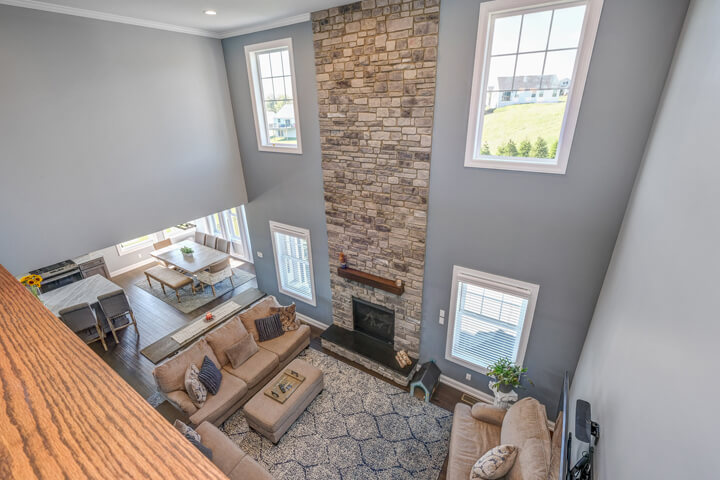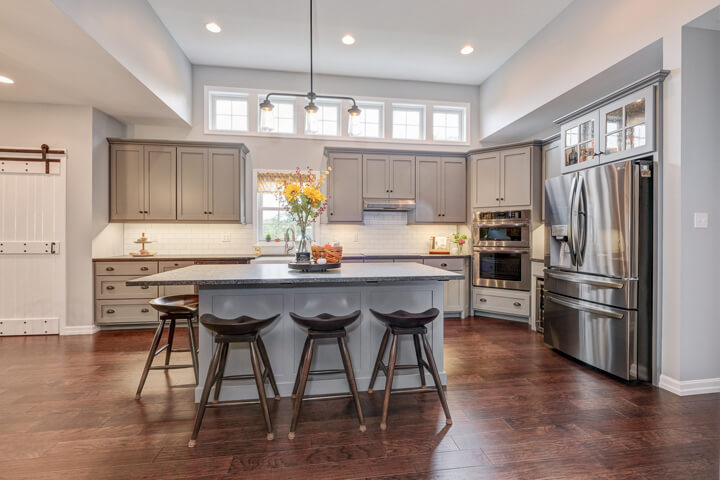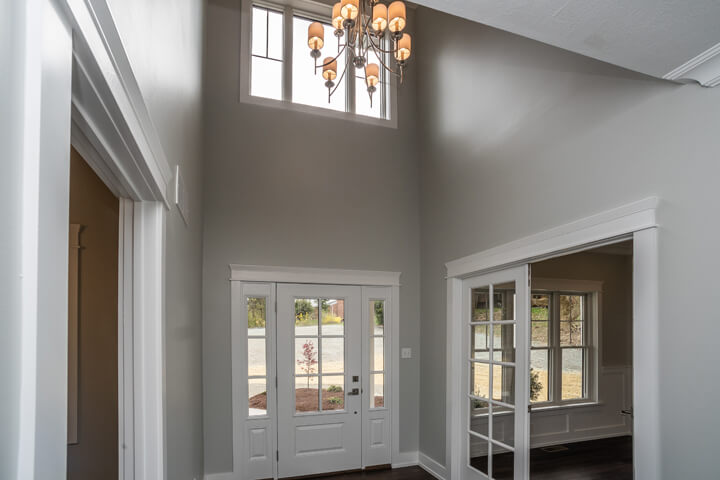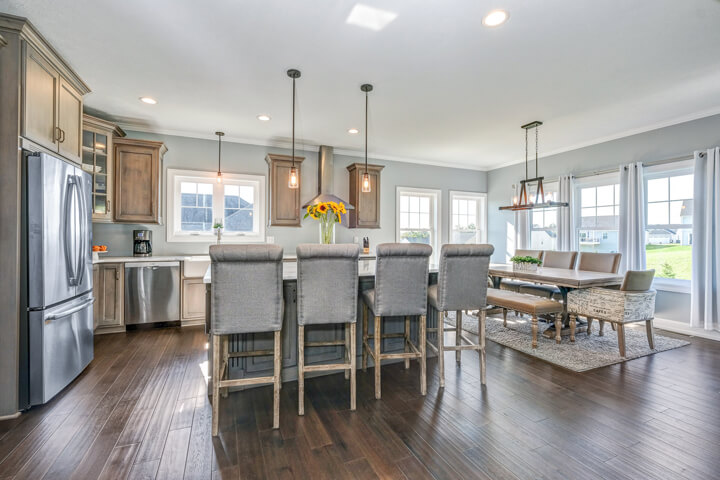When planning to build or remodel, finding ways to increase natural light in your home can dramatically enhance its ambiance and aesthetic appeal. A well-lit home not only provides a warm and welcoming environment but also contributes to your well-being. Natural light improves mood, enhances the beauty of your interiors, and can even contribute to energy savings by reducing the need for artificial lighting during the day. Let’s explore some creative methods to infuse your home with natural light.
1. Maximize Window Space
Windows are the main gateway for natural light to enter your home, so to harness the full potential, focus on maximizing window space. A combination of larger windows, free of obstructions, and well-chosen window treatments can substantially increase the flow of natural light throughout your house.

Choose Larger Windows
Larger windows will allow more natural light to enter your home and create a brighter atmosphere. Some fantastic larger window options include bay windows, picture windows, and the ever-popular floor-to-ceiling windows.
Remove Obstructions
Sometimes, a simple rearrangement of furnishings can significantly affect the amount of natural light reaching your living space. Clear away any obstructions, such as furniture or plants, that obstruct your windows to boost natural light. This simple action can result in a brighter and more inviting atmosphere.

2. Select Appropriate Window Treatments
The selection of window treatments plays a crucial role in controlling the amount of natural light that enters your home. Opt for light-colored, translucent window treatments, such as sheer curtains or blinds, to allow ample light in while maintaining privacy. Alternatively, consider adjustable treatments like plantation shutters or cellular shades that can be tailored to control light and privacy levels throughout the day. Not only do these window treatments help maximize natural light, but they also add a decorative touch to your home’s interior.
Incorporate Reflective Elements
If you’re seeking ways to enhance the natural light in your home, consider incorporating reflective surfaces. Mirrors, metal accents, and high-gloss paint are effective tools to maximize the sunlight that permeates your living spaces, even brightening the dimmest corners. You can create a luminous and airy atmosphere by strategically placing these elements throughout your home.
Mirrors
Mirrors are a timeless décor element that serve a dual purpose of enhancing the aesthetic appeal and making a space feel brighter. By reflecting natural light, mirrors create an illusion of extended space and amplify brightness in the room. Strategically positioning a large mirror opposite a window can act as a second source of light, reflecting the incoming sunlight and spreading it more evenly throughout the space. This tactic is particularly useful for enhancing natural light in rooms that do not receive direct sunlight. Mirrors of varied shapes and designs can also add an artistic touch to your home, all while enhancing the natural light.
Metal Accents
Metal accents can act as an effective solution for brightening up your home. Their highly reflective surfaces bounce light, distributing it evenly throughout the room. From metal light fixtures to furniture with metal elements or decorative pieces, these accents can significantly improve the luminosity of your home. Brass, silver, and gold accents not only serve to enhance the aesthetic appeal but also play a functional role in optimizing light reflection.
High-Gloss Paint
High-gloss paint in lighter colors is another effective tool in your interior design toolkit to maximize natural light. The sheen of high-gloss paint reflects light and helps it bounce around the room, contributing to a brighter, more open feel. When choosing paint colors, opt for lighter shades such as whites, creams, or pastels, which reflect light better than darker colors. Even in rooms with limited natural light, these colors can help to make the space feel brighter and more inviting. In contrast, darker colors absorb light, making a room feel smaller and less illuminated.
3. Utilize Glass Features
By integrating glass elements like doors, panels, and blocks into your home design, you can effortlessly invite abundant natural light while maintaining privacy. Additionally, the inclusion of glass features fosters connectivity and a sense of spaciousness between rooms, enhancing the overall aesthetic and ambiance of your home.

Glass Doors
By installing glass doors or French doors, you can infuse entryways and rooms with abundant natural light, resulting in a spacious and radiant ambiance. These doors also create a seamless and captivating transition between indoor and outdoor areas, such as patios or gardens.
Glass Panels and Blocks
Optimizing the flow of natural light and fostering a sense of openness in your home can be achieved by replacing solid walls with glazed panels or blocks. These panels (or blocks) enhance natural light and create a visual connection between rooms, especially in areas with limited window space.
4. Explore Alternative Light Sources
If your home has areas with limited natural light, you can boost brightness by exploring alternative light sources. Solar tubes, skylights, and artificial lighting are all excellent options to supplement natural light, ensuring your home remains bright and vibrant.
Solar Tubes
Solar tubes, also known as sun tubes or light tubes, are innovative structures that can channel sunlight into your home, even in hard-to-reach corners. They work by capturing daylight with a rooftop dome, then transfer it down through a reflective tube into your home’s interior. This can dramatically enhance the brightness of rooms that lack windows or are located on lower levels, such as basements. Not only do they increase natural light, but they also help to reduce energy costs and boost mood and productivity. They are a cost-effective and environmentally friendly solution for brightening up darker areas of your home.
Skylights
Skylights are an excellent solution for inviting an abundance of natural light into your home. In essence, these “roof windows” installed in the ceiling serve as a direct conduit for sunlight, illuminating your space beautifully and effectively. Whether you opt for fixed, ventilated, or tubular skylights, they equally contribute to enhancing the overall brightness. Moreover, skylights offer an additional advantage of providing a unique and picturesque view of the sky, adding aesthetic appeal to your home.

5. Create Open Floor Plans
Creating open floor plans can significantly enhance the natural light in your home. This design approach allows sunlight to flow freely between rooms, eliminating the barriers that darker walls or partitions might create. An open floor plan fosters a spacious, airy feel, promoting a brighter and more inviting environment. It not only increases the natural light but also promotes social interaction and connectivity within the household. Whether it’s a combined living-dining area or a kitchen blending seamlessly with a family room, open floor plans can truly transform your living spaces into bright, welcoming hubs of your home.
6. Add Greenery to Your Home
Greenery can add a vibrant touch to your home, enhancing the overall aesthetic while contributing to a brighter ambiance. Indoor plants not only improve air quality but also reflect light, amplifying the natural brightness of a room. Consider incorporating a variety of houseplants in different sizes and placements, such as hanging plants for high corners or potted ones for table-tops. Additionally, certain plants have shiny leaves that catch and reflect light, contributing to a brighter interior. Therefore, adding greenery can be a simple yet effective strategy to illuminate your home and create a lively, welcoming environment.
In conclusion, enhancing the natural light in your home is a multifaceted endeavor that involves thoughtful planning and design. By integrating some of these natural lighting strategies, you can transform your living spaces into bright, radiant areas that exude warmth and comfort. Making use of these methods can help you successfully add natural light to your custom home.















